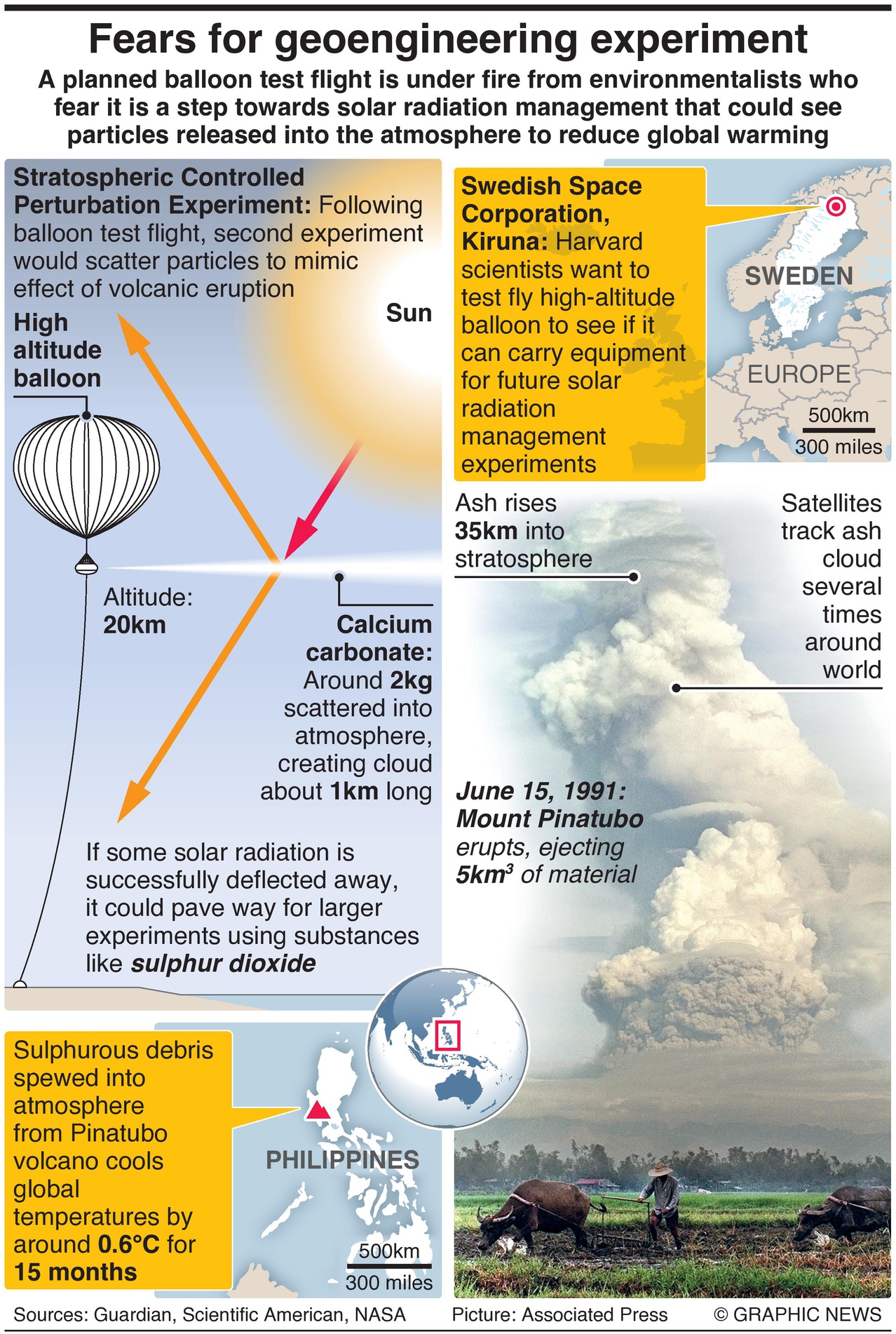A planned balloon test flight is under fire from environmentalists who fear it is a step towards solar radiation management that could see particles released into the atmosphere to reduce global warming.
A team of Harvard scientists wants to test fly a high-altitude balloon from the Swedish Space Corporation in the north the country, pending approval from an advisory committee.
Controversially, the flight is to test whether it could carry equipment for a future solar radiation management experiment.
Stratospheric aerosol injection is a theoretical proposal to dim the sun by spraying inorganic particles such as calcium carbonate or sulphur dioxide into the atmosphere – mimicking the effects of a volcanic eruption.
In 1991, scientists observed that particles from the eruption of Mount Pinatubo in the Philippines cooled global temperatures by around 0.6°C for 15 months.
Predictably, environmentalists are up in arms at the idea, fearful that it will lead towards the adoption of potentially dangerous and unpredictable technology that could irrevocably damage the planet’s weather system.
Naysayers believe the technology could reduce growth rates of phytoplanktons, trees and crops by at least 2.5% — reducing our ability to grow food.
However, advocates have confidence that solar radiation management could provide a grace period of up to 20 years, during which time nations could reduce greenhouse gas pollution to safe levels.
A Swedish independent advisory committee is set to rule by February 15, 2021, if the balloon test flight will be allowed to go ahead or not.




